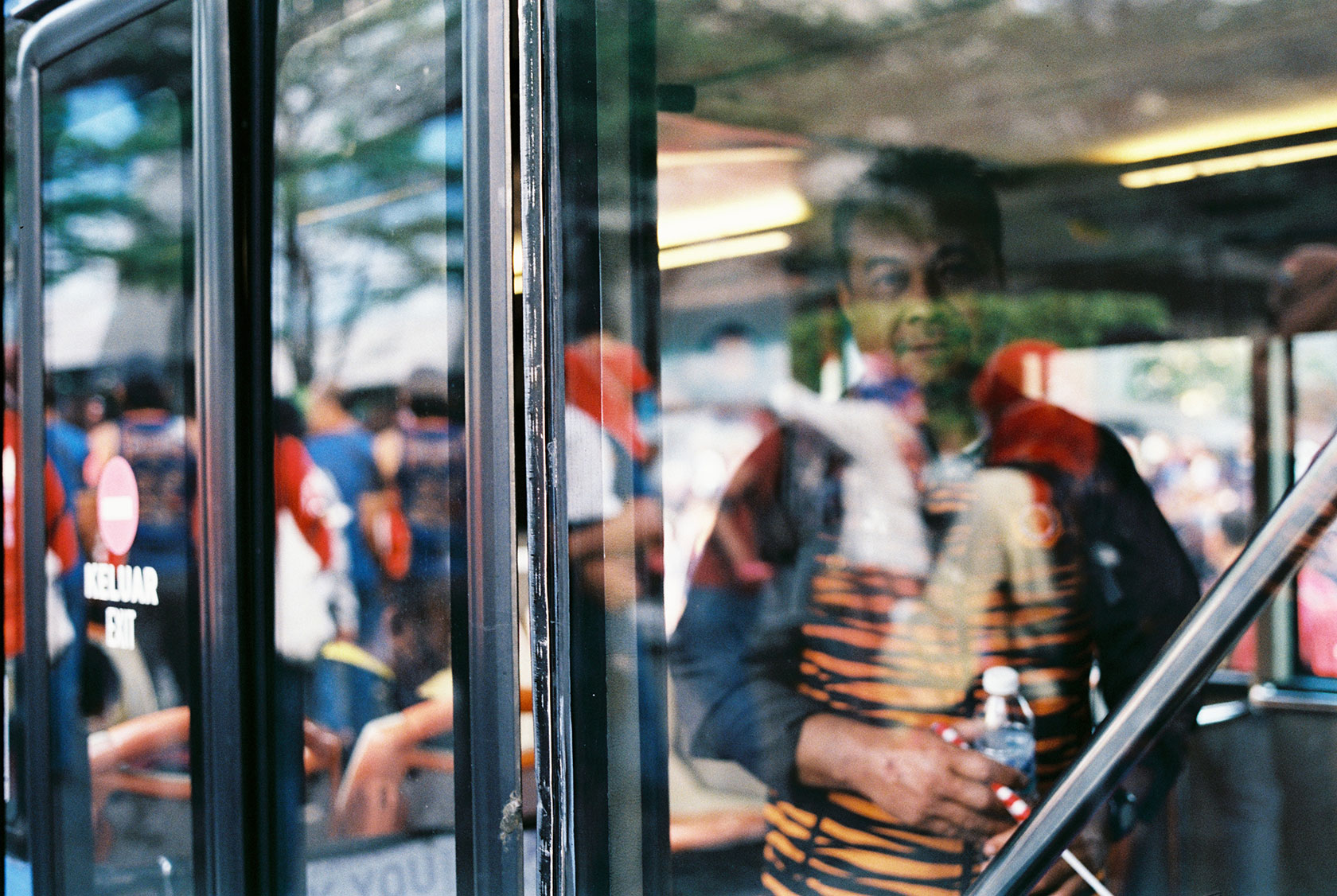Street photography is a type of photography that focuses on capturing the everyday moments and interactions of people in public spaces. This type of photography requires more than just pointing and shooting—it’s about developing a keen eye for details, angles, and light. With these tips, you can learn the art of street photography composition and start taking stunning pictures of your city’s sights, streets, and people.
Everyone has a creative streak inside them, and with photography, that talent can be unleashed. Whether it’s capturing moments to cherish for years to come or creating stunning works of art, learning photography basics is the first step to unlocking your potential. Here we will be continue covering the basic photography techniques and street photography elements such as composition and framing which we have shared in the previous post.
No matter how talented you are, if you don’t have a camera, you won’t be able to take any photos. There are all sorts of different types and prices of cameras available, so start by finding one that’s affordable and fits your needs. A camera can range from a basic point-and-shoot to a high-end DSLR, so it’s important to find one that will fit your needs and your budget.
Here are some of the street photography composition that we will be covering:
Getting Started
Once you have your camera, the next step is to get started learning the basics. One of the best ways to learn photography is by doing it. Sometimes you might encounter the common photography mistakes, but you can improve by shooting more often. Take some photos of your surroundings and see how different angles, settings, and compositions can change the look and feel of your photos. There are a lot of photo editing programs available, such as Lightroom, Capture One, Luminar, Adobe Photoshop, that can help you to improve your photos, but don’t be afraid to experiment with different techniques on your own.
Start by studying the landscape around you. Notice the different elements of the scene, from the buildings and trees to the people walking by. Pay close attention to how these elements interact with each other and with the light. This will help you create a cohesive photo composition that tells a story. In street photography, you want to capture the energy and action of the scene, rather than focusing on specific details. You can use a wide range of angles, settings, street photography layering and compositions to create striking photos that tell a story.
One of the most important aspects of street photography is finding compelling point-of-view shots. This means positioning yourself so that you can capture the action from a unique perspective. For example, take a picture of a busy street corner from a high vantage point to show the scale of the scene. Or try capturing a close-up of a person’s face to show their personality.
Be aware of the light and shadows in your environment. Use these to your advantage by creating dramatic compositions that capture the essence of your subject. For example, take a picture of a sunset over the city skyline to show off the beautiful colors in the sky.
Mastering Street Photography Composition
Here are some of the street photography composition that you can master and make your photos looks cool. These composition elements are usually used most in art, photography and film. It can be use individually or combined together leading lines, rules of thirds and so on to create a compelling scenes that will attract the eyes of the viewers. Let’s check out the list of street photography composition that you can use to create interesting street photos for your next street photography projects and assignments.
1. Angles

Angles are one of the most important aspects of street photography. You want to capture the energy and action of the scene, rather than focusing on specific details. Use a wide range of angles, settings, and compositions to create striking photos. Use a high point in your scene to draw the viewer’s attention and focus on the subject. Then use a low point in the scene to add depth and perspective.
2. Points
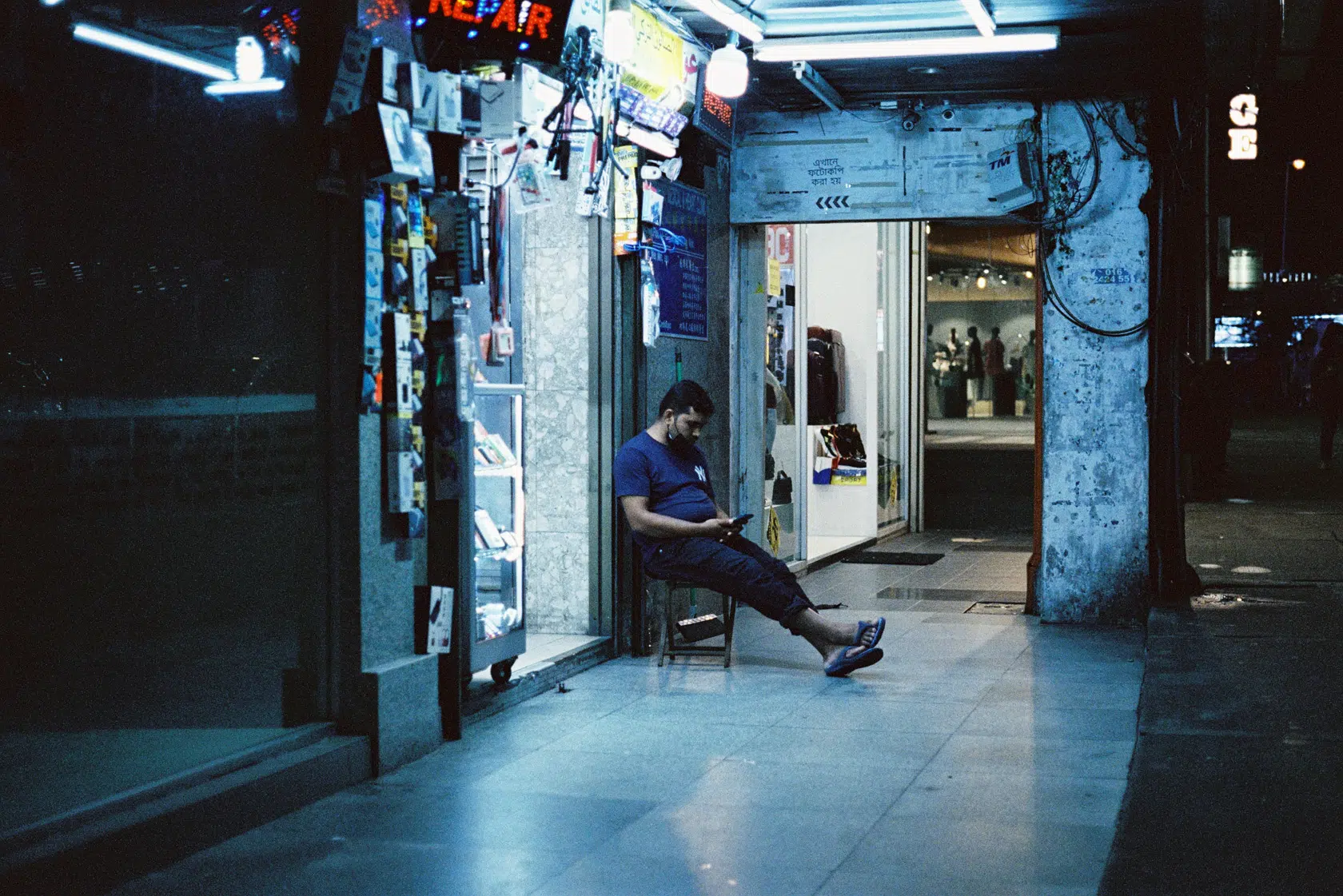
Also known as point of interest, points are one of the composition elements that are frequently used in photography and film to catch the attention or direct the viewer’s eyes. Points are often used in street photography and film in conjunction with the rule of thirds and the golden triangle.
4. Frames within Frames
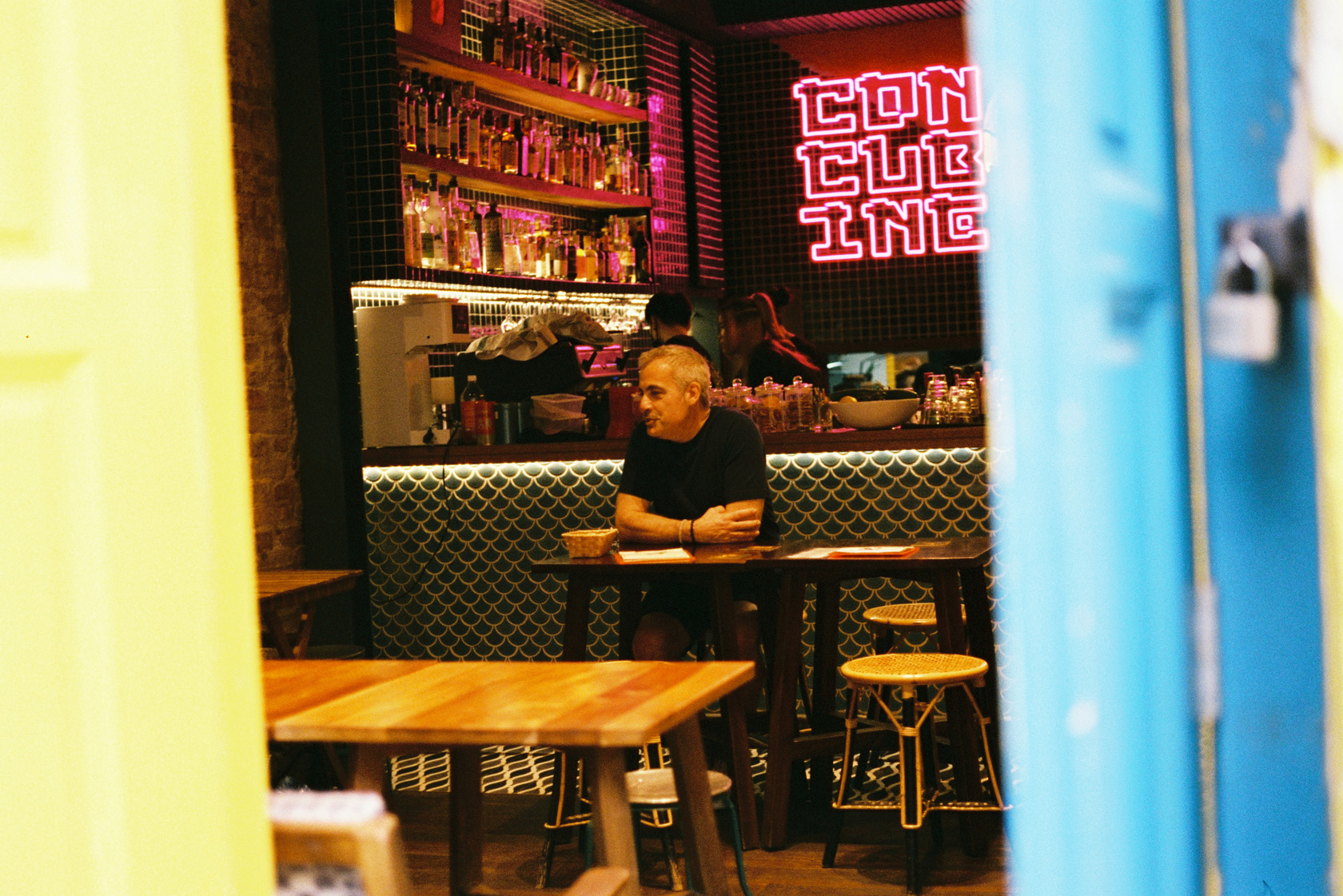
When composing your photo, use frames within frames to create a more dynamic look. For example, take a picture of a busy street corner from a high vantage point to show the scale of the scene. Or try capturing a close-up of a person’s face to show their personality. You can capture a more complete and cohesive photo by framing your subject using the Framing Guideline setting on the Fujifilm cameras within a larger scene.
5. Space

When composing your photo, use space to your advantage. For example, take a picture of a busy street corner to show the variety of people and vehicles on the street. Or try photographing a close-up of a person’s face to show their emotion. By using space in your photo, you can create a more dynamic scene that is easier to understand. The negative space, positive space, and headroom are part of the space elements.
Create space in your photo by using a variety of elements. For example, use a wide background to fill the frame and add depth. Or use trees or buildings to create a sense of separation and depth. By positioning your subject within this space, you can create a more dynamic photo.
6. Filling the Frame
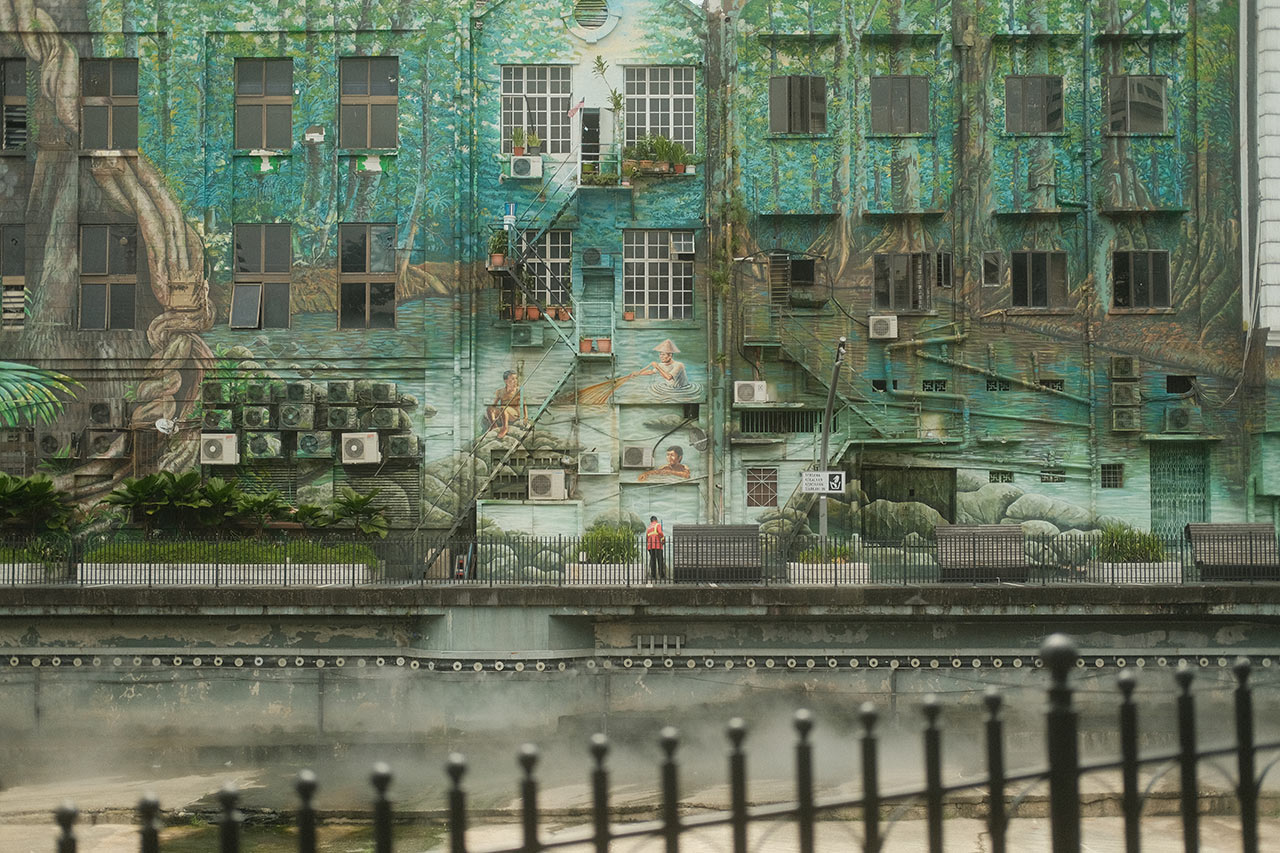
When it comes to street photography, filling the frame is one of the photography techniques that you can easily learn and master. You can use this technique by filling the entire frame of your shots with interesting background and subjects or shooting close-ups of a subject. By using a variety of elements to fill the frame, you can create a more dynamic and compelling photo.
7. Symmetry
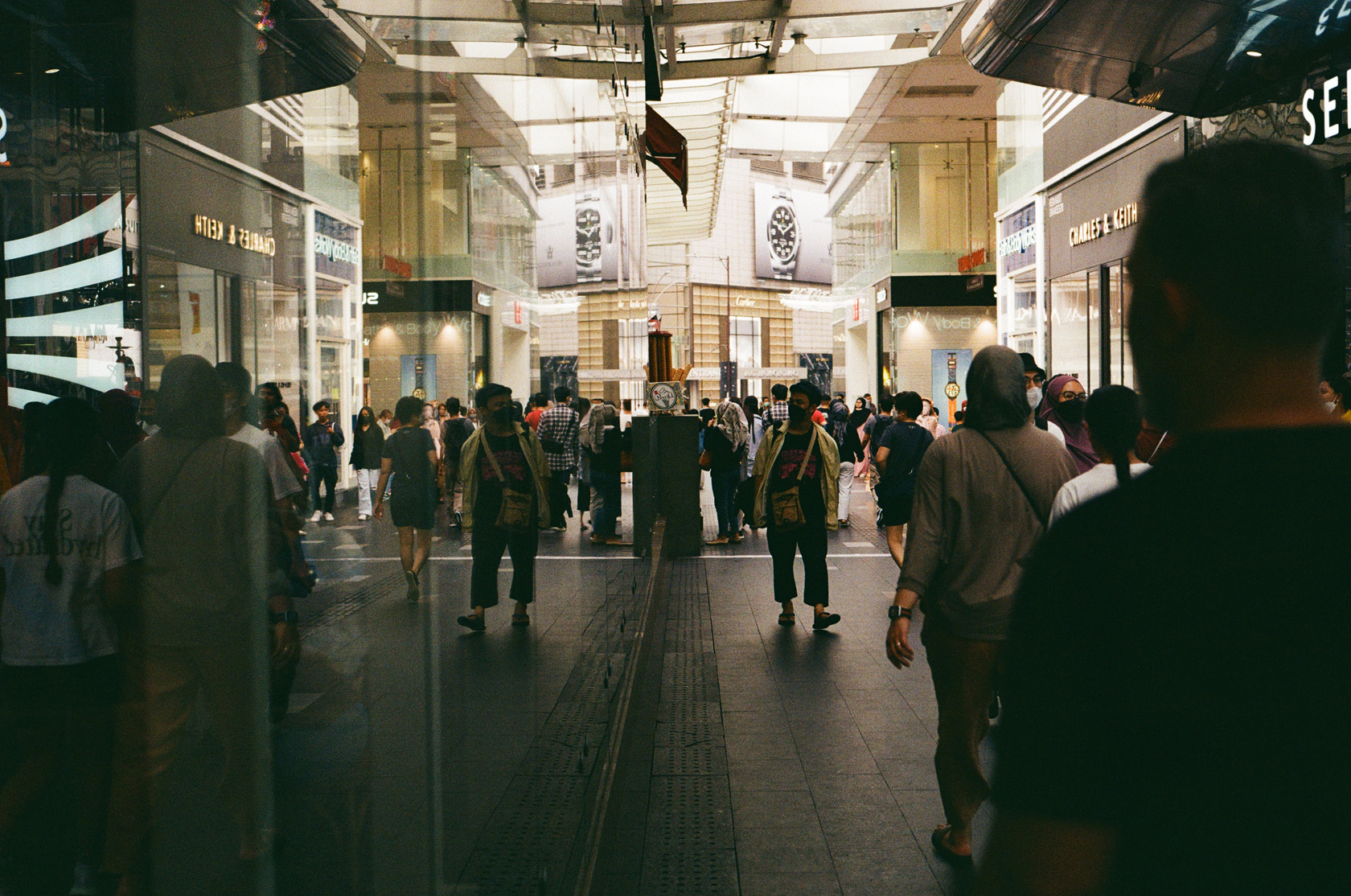
Symmetry is another common street photography composition technique that you can use to create striking photos. By using symmetrical elements in your photo, you can create a more balanced and visually appealing scene. For example, use the same color or shape throughout your photo to create a more cohesive look. Or use different angles to create a more dynamic and interesting photo.
8. Reflection
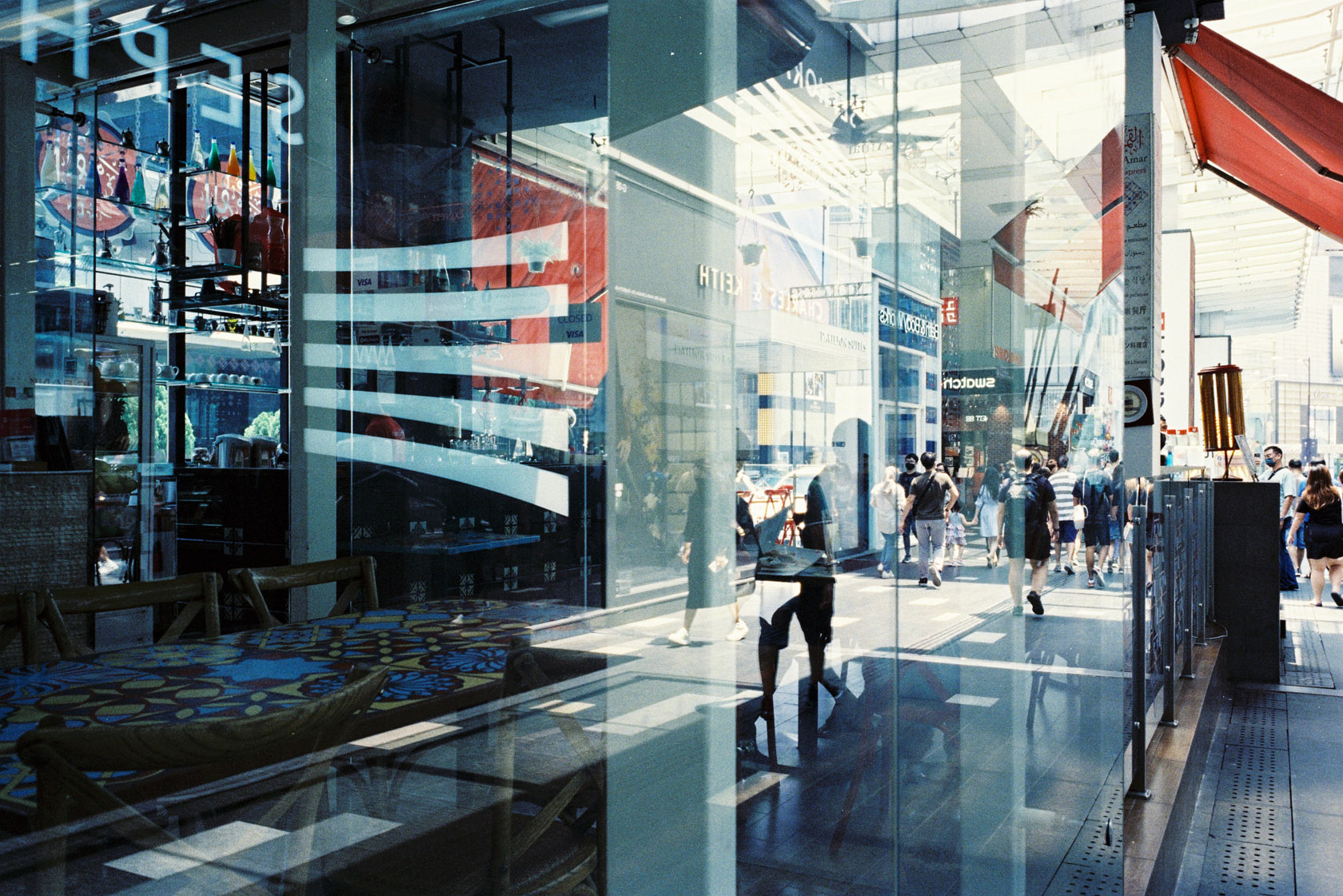
When composing your photo, use reflections to create an interesting and striking scene. For example, take a picture of a busy street corner at night and use the light from the buildings to create a beautiful reflection. By using reflections in your photos, you can create a more dynamic and interesting scene. There are many ways to use reflection such as using a mirror, glass, or water puddle. Learn more about reflection in street photography and view more sample photos.
9. Color & Tone

Different colors can create interesting and striking photos when used in the right context. For example, take a picture of a busy street corner filled with colorful costumes and hats. In contrast, take a picture of a quiet alley in the evening to show the contrast in color and light. You can use a single color that look striking to the eyes and make it as the interesting point in your photos.
Small and Lightweight Cameras for Street Photography: Why Size Matters
Now when it comes to camera gears, does the camera size matter? There are pros and cons to shooting with a large or small camera. They also tend to have larger sensors that produce better-quality photos in low-light conditions. Large cameras can be cumbersome to carry around and can be difficult to fit in tight spaces. Using a larger camera for street photographers will look obvious to strangers and will easily get confronted or rejected. So it is important to choose the right size and type of camera for your street photography journey. Confrontation with strangers is one of the fears that every beginner street photographer will have to face.
On the other hand, a small camera can be more discreet and can easily fit in tight spaces as small cameras are great for capturing candid shots and are often easier to carry around. Small cameras tend to be less bulky and can fit in tighter spaces. Nowadays there is a small, lightweight camera that produces high-quality photos, categorized as the best street photography cameras such as the Fujifilm X100VI, Fujifilm X-Pro3, and Ricoh GR III compact digital cameras. You might also want to choose a suitable camera lens for street photography so you will be able to capture the entire street moments.
Conclusion
There are many other composition techniques that you can use to create interesting and compelling street photos. Experiment with different angles, frames, and space to find the best way to capture the energy and action of the scene. By mastering these composition techniques, you can create striking and dynamic street photos that will capture the attention of your viewers. These street photography composition can be used during your travel or vacation if you shooting street-style travel photos or wanted to try out the cinematic look photos whenever you are strolling in the city or street. Feel free to use these composition as your street photography project ideas just in case you are out of ideas of what to shoot. Frequently out of ideas? You can explore more creative composition techniques for your next street photography outing.
With these tips, you can start to unlock your creative potential and take stunning photos of the sights, streets, and people in your city. Don’t forget that the right camera is essential for getting the perfect shot. Begin by looking for one that fits your budget and needs, and soon you’ll be taking beautiful pictures with street photography composition. What are you waiting for? Get out there and start shooting!


